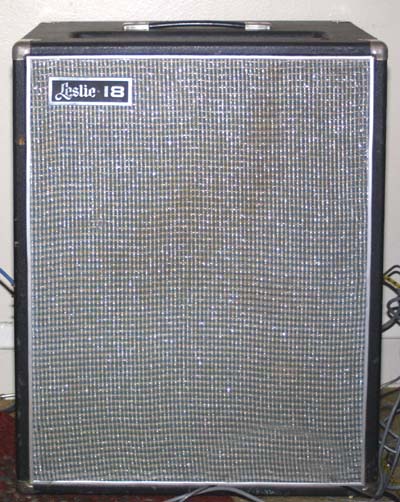 The speaker unit itself contains a rotating solid metal plate with an opening.
This plate is situated directly in front of the speaker cone.
The speaker unit itself contains a rotating solid metal plate with an opening.
This plate is situated directly in front of the speaker cone.
Though designed for organs, and meant to produce a more traditional sound, the Lesley was soon discovered by musicians looking for a novelty. When a guitar was played through a Lesley speaker, it sounded like nothing that had been heard before. There was a foreign abstract sound, which suited much of the music being performed in the sixties very well.
A similar, though less distinct, sound can be made by throwing stereo tracks in and out of phase, a trick that was used in some recordings. This was used in much of the psychedelic music of the sixties, and seventies. The out of phase sound gave a similar quality to the Lesley sound, but did not have the rhythmic, regular effect of the Lesley. The Lesley also had the advantage of creating the effect through a single speaker, as a single sound, rather than depending upon the interference of out of phase sound waves to produce it through random interaction.
Much of what the Lesley does, can now be done electronically, though not with the same flavor. It is also certainly easier and more practical, during a live performance, to have the speaker do the job, than set up digital amplifiers, sound proccesors, and maybe a computer, to do the ame job (cheaper too).